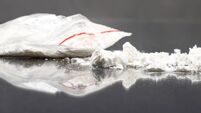Intravenous stem cell treatment is dangerous, warns doctor
Consultant neurologist at the Mater Hospital in Dublin, Dr Tim Lynch, said he always warned patients that they could potentially harm themselves by getting the controversial treatment.
Irish patients, desperate for a cure for their condition, have been travelling abroad for the injectable and unproven treatment that costs up to €30,000.
“The treatment is not only dangerous, it is also an expensive treatment without any data that it is of benefit,” he pointed out.
Dr Lynch believes stem cells will have a big role to play in the treatment of neurological disease and rehabilitation of patients but, because it is such an incredibly complex area, progress will be slow.
Among the conditions that scientists believe may eventually be treated by stem cell therapy are Parkinson’s disease, Alzheimer’s disease, heart disease, stroke, arthritis, diabetes, burns and spinal cord damage.
Dr Lynch said he did not know if any of his patients had received intravenous stem-cell infusions but, nevertheless, always emphasised the risks involved, particularly tumours.
“If you study tumours, you will find a higher proportion of stem cells and good data is suggesting that brain tumours may actually originate from stem cells that are still present.”
Dr Lynch said there was no way of knowing what kind of material was being used and whether it had been tested for infections and other impurities.
If people wanted to use the stem cells, they should do so in a properly controlled trial, said Dr Lynch, a speaker at a conference on rehabilitation medicine and long-term care at the Royal Hospital Kilmainham.
Such trials were held in controlled conditions and if the treatment worked the data could be used to treat other patients.
Dr Lynch also believed scientists involved in research would have to find a technique that did not result in embryos being destroyed.
Using amniotic cell tissue surrounding the foetus would be one way around the issue, he suggested.
Extracting a single cell from the embryo, at its earliest stage of division, so as to avoid its destruction was another way.
He said claims made by researchers had to be carefully analysed because they were under huge pressure to come up with results.
“There is a bit of teasing out to do yet to get the right cells and the right signals to those cells so as to make sure they do not cause more harm than good.”












